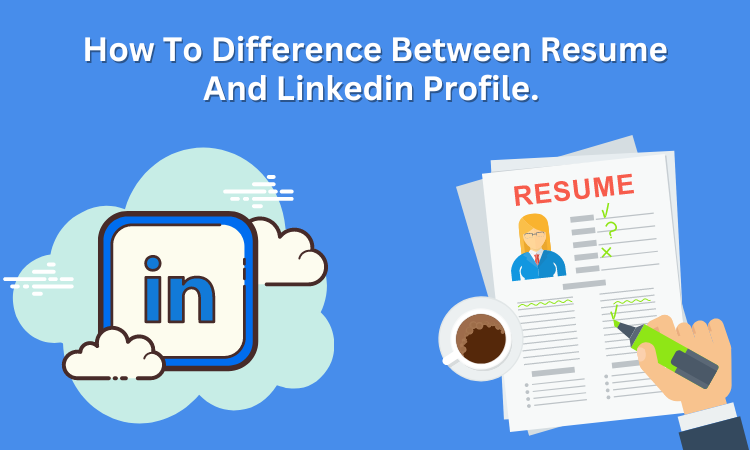How to Choose the Right LinkedIn Profile Maker?
When it comes to a LinkedIn profile, it’s more than just an online resume. Your LinkedIn profile is your professional brand. That’s why choosing the right LinkedIn profile maker is essential. They help you craft a compelling, optimized LinkedIn profile that stands out in a crowded network, boosts the visibility of your profile on the platform, and attracts the right opportunities. No matter, if you’re job hunting, networking, or even building your brands, a professional ensures your profile highlights your strengths and avoids common mistakes. In this blog, we’ll guide you to choose the expert for your career goals. Why Do You Need a LinkedIn Profile Maker? A LinkedIn profile maker helps you create a professional, polished, keyword-optimized profile that attracts attention. As millions of users compete for visibility, a well-crafted profile is essential in order to stand out and connect with the right people while unlocking career opportunities. When you get help from an expert, it ensures your strength and skills shine through clearly and effectively. Here are some points, that clearly highlight what actually a professional does when you hire for your LinkedIn profile optimization: Customize your profile to your industry along with your career goals. Optimize keywords for better search rankings. Highlight your unique skills and achievements. Avoid common LinkedIn profile mistakes. Apart from these, they enhance your personal brand in order to attract recruiters and clients. Types of LinkedIn Profile Makers 1. Freelance LinkedIn Writers Freelance LinkedIn writers are independent professionals who focus on writing LinkedIn profiles. These professional writers usually work closely with you in order to understand your background along with your goals. If you want a personalized approach and more control over the process, then these freelancers are a great option for you. Most of them are flexible, affordable and know how to make your profile stand out with the right keywords. 2. Resume Writing Companies These companies provide full professional branding services, resumes, cover letters, and LinkedIn profiles. They follow proven methods as they have teams of writers who know what actual recruiters are looking for. If you want to polish, keyword-rich profile that perfectly matches your resume, then you must get in touch with a company that provides resume writing services. You’ll get the all-in-one solution that saves you time and effort. 3. Career Coaches with LinkedIn Specialization When it comes to career coaches, they do more than write. These coaches help you figure out your strengths, and goals and how to present them perfectly. With LinkedIn expertise, they’ll guide you in building a profile that truly reflects who you are and where you’re headed. These coaches are especially helpful if you’re changing careers or even unsure how to position yourself. 4. Industry-Specific Experts These experts know how your field is inside out. No matter if you’re a tech, finance, healthcare, or even anything else. They understand the right language, trends, and what hiring managers actually expect. If you want a profile that speaks directly to your industry, then these industry experts are your go-to. Furthermore, they are great for senior roles or specialized jobs where details really matter. Key Factors to Consider When Choosing a LinkedIn Profile Maker 1. Experience & Expertise A proficient LinkedIn profile maker should have solid experience in writing professional profiles. Always look for a profile maker who understands how to highlight your strengths, avoid common LinkedIn mistakes, and create a profile that gets noticed. The expertise of your profile maker can make all the difference in how confident and polished your LinkedIn profile looks. 2. Industry Relevance As we all know, every industry has its own language along with expectations. So, a profile that works for tech might not work for finance. Choose a LinkedIn profile maker who better understands your industry so they can align your profile with what hiring managers and recruiters actually look for, this is a key part of smart LinkedIn optimization. 3. Personal Branding Approach When it comes to your LinkedIn profile, it should clearly reflect your unique personality along with your career story. A good profile maker will focus on personal branding and go beyond just listing job duties. 4. Keyword Optimization & SEO Knowledge LinkedIn optimization isn’t all about just writing well. But it’s about being found. An expert knows how to use the right keywords, so your profile ranks higher in search results. It boosts your chances of connecting with recruiters, expanding your LinkedIn network, and leading to better opportunities. 5. Samples and Portfolio Always ask your profile maker to show their past work. When you review samples, it gives you a clear idea of the profile maker’s writing style, structure along with tone. Over and above that, it also shows how well they handleLinkedIn optimization and avoid common LinkedIn mistakes, like vague job descriptions, or even keyword stuffing. 6. Client Testimonials and Reviews Happy clients are a strong signal that a profile maker delivers results. Read reviews, or even ask for testimonials in order to get real feedback. You’ll learn how they work, how well they communicate, and whether their profiles helped clients grow their LinkedIn network, or even land new roles. 7. Pricing and Packages Prices could vary widely, so you should check what’s included. Some profile makers offer full LinkedIn profile optimization with a branding strategy, while others make changes to the existing content. Always choose a package that fits your needs along with your budget. But remember, investing in professional optimization often pays off in better career results. 8. Turnaround Time and Communication A good profile maker should clearly communicate how long the process takes while keeping you in the loop. Delays and poor communication can be frustrating. Choose your profile maker who responds promptly, answers your questions, and delivers an optimized LinkedIn profile on time without even cutting corners. Questions to Ask Before You Hire 1. What industries have you worked with? This helps you know if the profile maker understands your field’s language along with expectations and makes your LinkedIn






